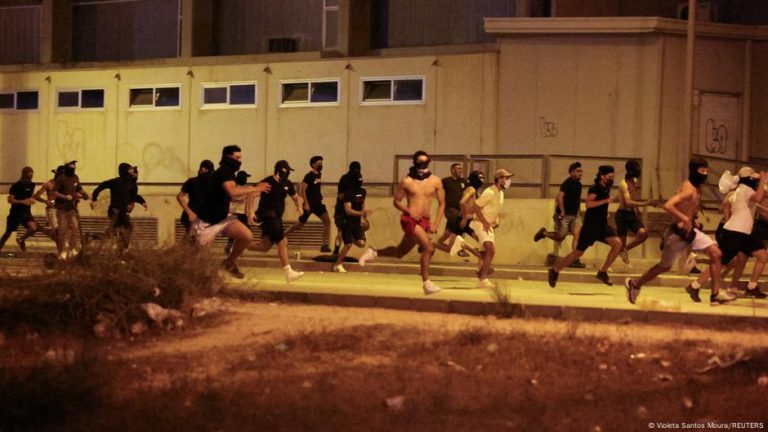Tensions Flare in Torre Pacheco Following Assault and Misinformation
The Spanish town of Torre Pacheco, located near Murcia, became the epicenter of social unrest after a 68-year-old resident, Domingo Tomas Martinez, was assaulted on July 9th. While the motive behind the attack remained unclear, it sparked several nights of riots and violent protests, fueled by xenophobic messages circulating on social media. Far-right groups exploited the incident, disseminating calls to “hunt down” migrants, exacerbating the already tense atmosphere. Torre Pacheco, a coastal town with a population nearing 40,000, has a significant migrant community comprising approximately one-third of its residents. Though local authorities report that calm has largely been restored, the incident underscores the volatile power of misinformation in igniting social unrest.
Misinformation Fuels the Flames: A Case of Mistaken Identity
A video depicting an elderly man being assaulted quickly spread across social media platforms like Facebook and X (formerly Twitter), further inflaming the situation. One widely shared post on X, originating from a verified organization account, falsely claimed the video showed the attack on Martinez in Torre Pacheco, explicitly blaming “North Africans.” This claim, however, was demonstrably false. The video, in reality, documented an unrelated assault on Jose Moya that occurred two months prior in Almeria, a city over 200 kilometers away from Torre Pacheco.
The Victim Speaks: Unraveling the Truth Behind the Viral Video
Jose Moya, the actual victim in the viral video, subsequently released a statement on Instagram clarifying his identity and the circumstances surrounding the assault. He detailed the attack, explaining that two individuals, whom he identified as Spanish, not migrants, had assaulted him after he couldn’t provide them with tobacco. Moya sustained serious injuries, including a head wound and broken ribs. He emphatically stated that the incident had nothing to do with the assault on Martinez in Torre Pacheco. Furthermore, Martinez himself confirmed to various media outlets that he was not the person depicted in the viral video, adding another layer of verification to debunk the false narrative.
Geolocating the Truth: Exposing the False Narrative
DW Fact Check meticulously investigated the viral video, geolocating the scene to Almeria, corroborating Moya’s account. Key details in the video, such as the distinctive row of trees, graffiti, and the ground surface, matched the location near the Centro Periferico de Especialidades (Bola Azul) hospital in Almeria. This geographical verification, coupled with Moya and Martinez’s statements, definitively disproved the false claims linking the video to the Torre Pacheco incident.
Further Falsehoods Propagate Online: Misinformation Spreads Like Wildfire
The incident in Torre Pacheco triggered a wave of misinformation targeting migrants and Muslims. One false claim circulating on X asserted that local police in Torre Pacheco were attacked by migrants and that the Civil Guard failed to intervene. This video, however, documented an incident in Torrevieja, a separate town approximately 40 kilometers from Torre Pacheco. Another misleading post featured a video purportedly showing a “ham protest” organized in response to the Torre Pacheco assault. This video, however, was completely unrelated, originating from a 2024 attempt to set a world record for the largest plate of ham in Huelva.
The Dangers of Misinformation: A Call for Critical Engagement
The events in Torre Pacheco serve as a stark reminder of the real-world consequences of misinformation. False narratives, amplified by social media, can incite violence, deepen social divisions, and endanger lives. It is crucial to approach online content with a critical eye, verifying information from reliable sources before sharing. The responsibility to combat misinformation rests with each individual, emphasizing the need for careful scrutiny and responsible online engagement. Pausing to verify facts, consulting fact-checking organizations, and thinking critically are vital steps in preventing the spread of harmful misinformation and its potentially devastating real-world consequences.


